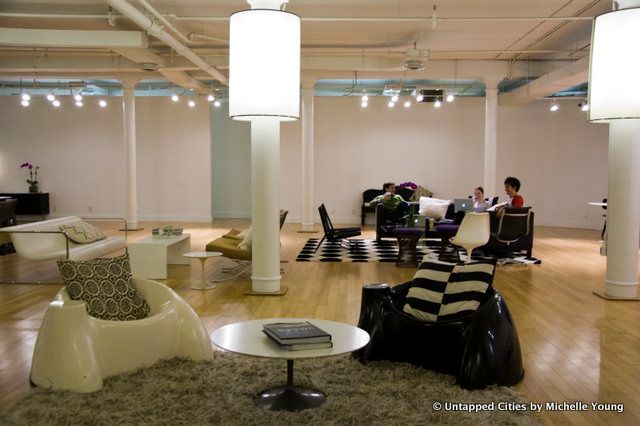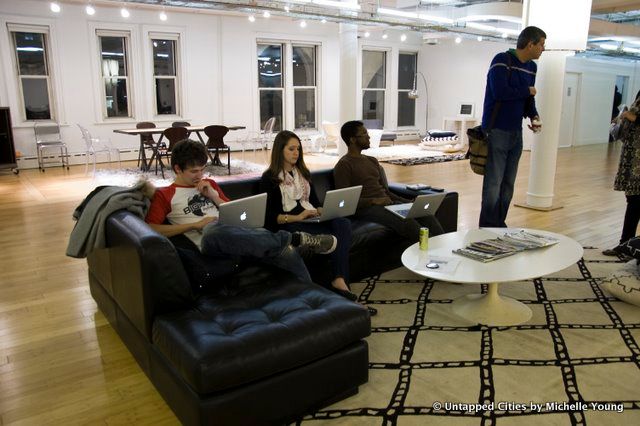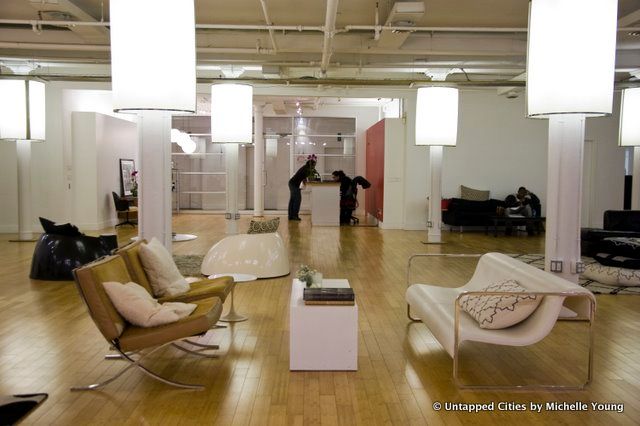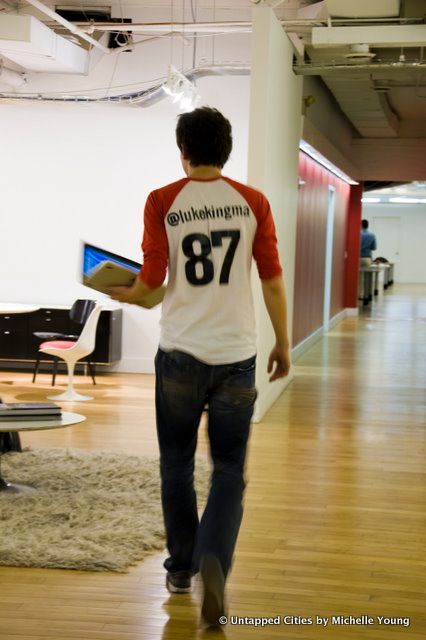Last Chance to Catch NYC's Holiday Notalgia Train
We met the voices of the NYC subway on our nostalgia ride this weekend!



“The right 140 characters has the power to change the world.” – artwork in the Big Fuel office
Social media agency Big Fuel will be the hub of Social Media Week in New York which begins next week on February 13th. A few months ago I did some research on cool office spaces in New York, which led me to General Assembly and Big Fuel, among others. I was looking on the impact of technology on the design of office space, which can be a reflection of a company’s embrace of the growing mobility of the workforce. Andrew Laing from the strategic consultancy firm DEGW (who advised on the groundbreaking Google Mountain View campus design), helped shape my theories. His research looks at not only how mobility has changed office design, but also its socio-physical impact on the city. He proposes that mobility and technology have made possibile “the city as an office” (you can work from anywhere and network with anybody virtually) and “the office as a city” (you can plan an office space like you do a city–to encourage interaction, productivity and mixed-use). He also suggests that these two concepts work in tandem informing each other. Ultimately, he hopes that technology will finally challenge the long-standing supply chain of office construction, with its roots in post-WWII. It’s simply outdated in the digital era of today.

While General Assembly (which we recently covered in Untapped) is a co-working space, it doesn’t mean that certain design principles can’t be replicated for individual companies. Big Fuel provides social media campaigns for firms such as T. Mobile, General Motors and Condé Nast. Its activities include delivering content for clients on Facebook, Twitter and other social media platforms and building brands through customer insight. In its New York office, located on 23
rdStreet between 5th and 6th Avenue, approximately 20% of the available floorspace is dedicated to a large working lounge/lobby area. Inside this space, there are 10 unique configurations of couches, pillows and tables. One of the Big Fuel employees told me she spends up to half a day working in this space. The Big Fuel-ers often have lunch together (with their computers) and continue working here during the afternoon.

For the firm, this space serves multiple functions. First, in the literal sense it’s a lobby for visiting guests. Second, the design imparts a strategy of openness, connectivity and forward-thinking that is part of the Big Fuel message. Each mini-workspace in the lounge is designed differently with a distinct character. The furniture is carefully selected and recognizable as design pieces, with the Eames Chair, the Philip Starck Louis ghost chair and the Parsons desk included in the mix. Exposed infrastructure, such as pipes, ventilation system and in a modern twist–ethernet cables–gives contrast to the highly designed space.



The employees move around often and their desk areas make it conducive for impromptu meetings to occur. Wi-fi is a given here and employees walk around with their laptops. Copywriter Luke Kingma even wears the Big Fuel baseball shirt with his Twitter handle printed on the back. While the desks still have dividers, they only exist on one side and Big Fuel is in the process of lowering some of the dividers. A main thoroughfare is left open between the two banks for desk, and there are no dividers on the walkway side encouraging interaction. On one of my visits, meetings were occurring in these walk-through space, both planned and impromptu.


Check out our coverage of the Social Media Week kickoff in the next week. At the kickoff press conference yesterday morning, New York City’s Chief Digital Officer, Rachel Sterne spoke about how social media has changed how the city serves New Yorkers. New York City has more active social media users than any city in the United States, and we’ve already seen the benefit of platforms like Twitter for communication during Hurricane Irene and humorous blogs like DOT’s Daily Pothole. The city currently operates 250 social media channels, whose traffic represent 40% of NYC government’s total digital reach. Carole Post, Commissioner of New York City’s Department of Information Technology and Telecommunications spoke about the push to make open city data even more accessible, along with new data partnerships with sister cities across the country.
Social Media Week in NYC will feature more than 350 free and curated events, ranging from fireside chats at Big Fuel to film screenings, panels, a Bryant Park FourSquare mayor contest and more. Globally, Social Media Week is taking place in twelve cities, and Untapped will be covering events in New York, London, Washington DC and San Francisco.
Follow Untapped Cities on Twitter and Facebook! Get in touch with the author @untappedmich. For more information on Big Fuel go to bigfuel.com and follow the company on Twitter.
Subscribe to our newsletter